Western lowland gorillas in Dzanga-Sangha
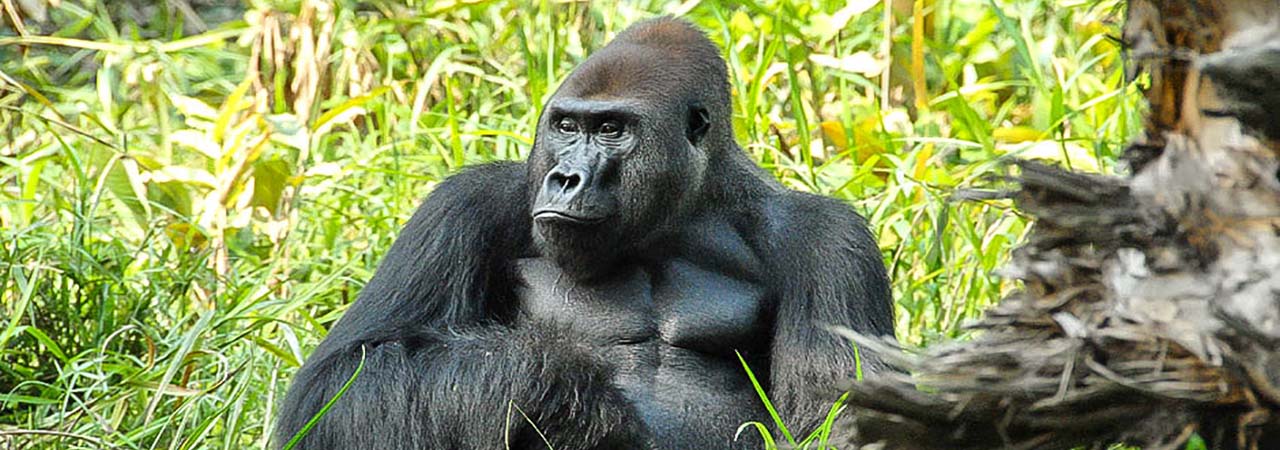
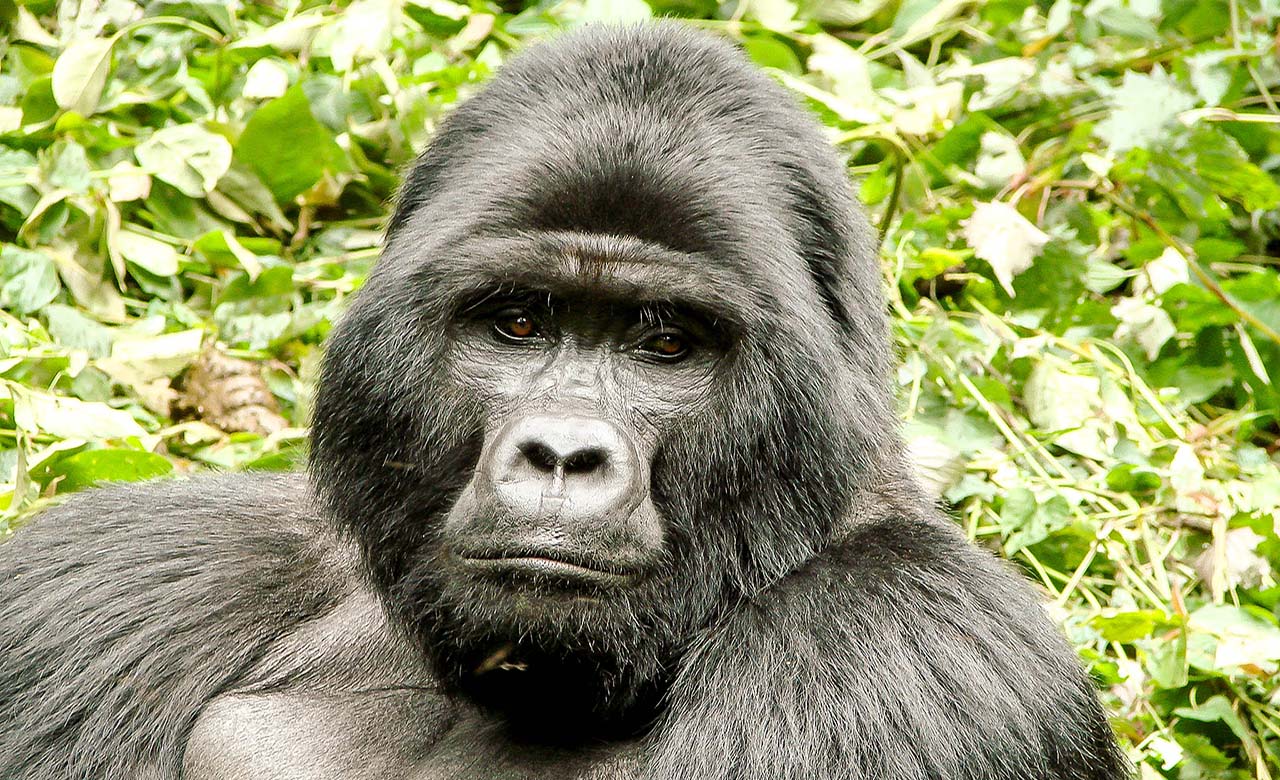
The Western Lowland Gorilla is an impressive primate living in tropical rainforests and swamps, up to 1,300 m above sea level, on the Atlantic side of Central Africa. It is a peaceful animal that is only aggressive when it is disturbed or threatened. This large primate lives in a group, generally dominated by a male, larger and more powerful than the females whose backs are covered with gray hairs commonly called “Silverbacks”. It can measure up to 1.80 m and can weigh more than 200 kg. With him, a few females and their offspring, babies and young adults.
Food
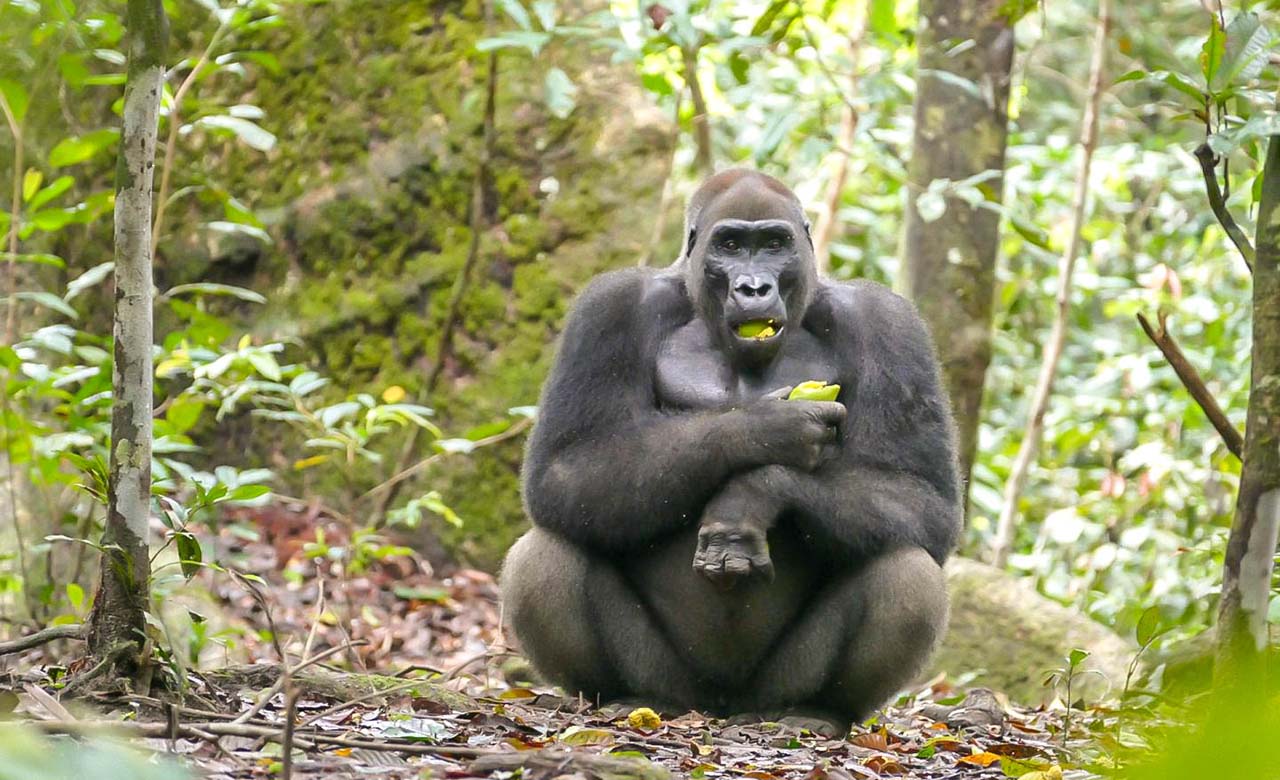
Gorillas feed on mineral-rich aquatic plants found in clearings and swamp forests. They are omnivores, particularly seasonal frugivores. Their favorite foods are fruits and termites, but gorillas can also eat young leaves in trees or mature leaves on the ground, stems of herbaceous plants, ants and bark. They occasionally feed on insects and flowers. The seasonality of their diet not only influences their daily movements but also their activity rhythm, their need for calorie intake, nutrients and minerals but also their health. Western gorillas are particularly prone to urinary tract infections and parasites during the wet seasons. They play a crucial role in biodiversity, they move across
large territories, disseminate the seeds of the fruits consumed, thus ensuring the proper development of the ecosystem.
Communication
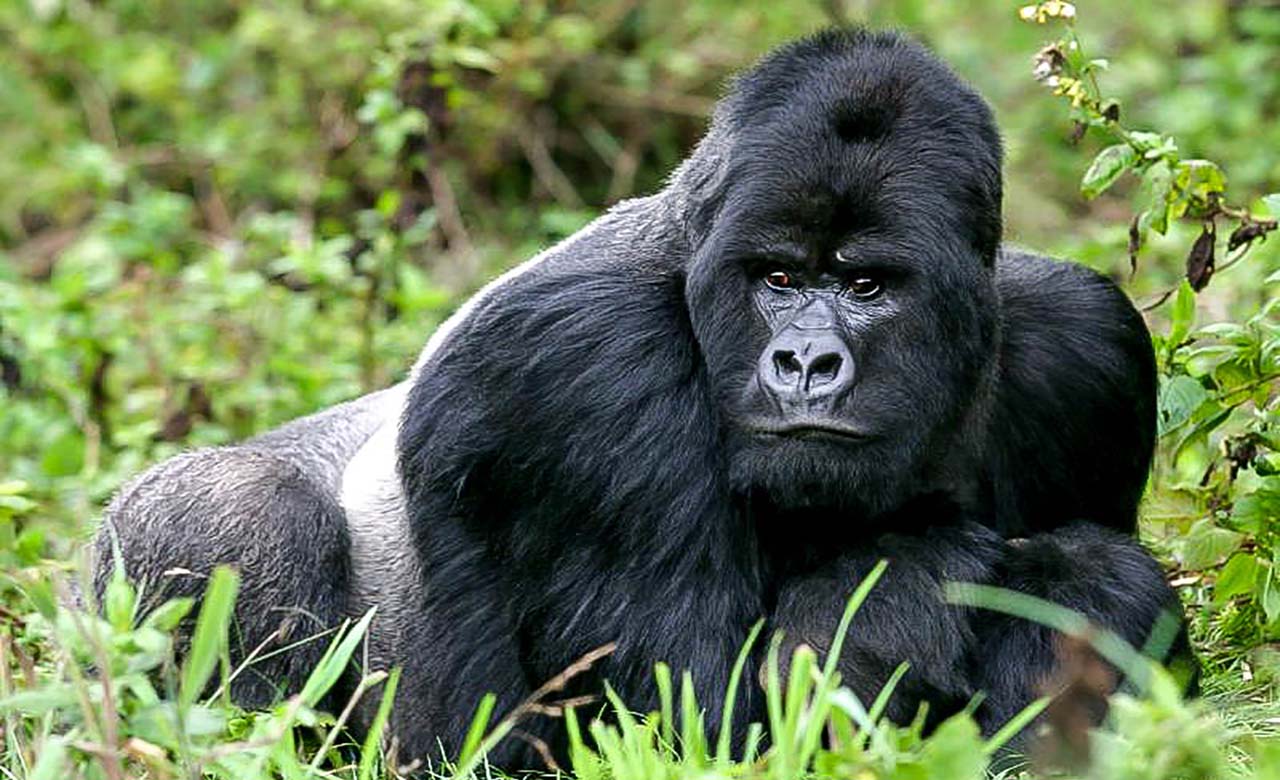
In gorillas, communication is mainly vocal, there are two types of vocalizations: long-distance vocalizations and short distance vocalizations. Long-distance vocalizations are used in different contexts, for example, to impress and discourage attackers such as other silverbacks or other animals, to locate each other but also as an invitation to play between the little ones. They are mostly accompanied by chest-beating, which is a typical gesture only expressed by gorillas. Chest-beating is carried out by the males, adult females and young. Short distance vocalizations mainly include guttural vocalizations which are used to coordinate the group. They are mostly carried out
by the silverback which manages the dynamics of the group but also by adult females in response to the silverback vocalizations. They are the closest living beings to humans, after the bonobos and the chimpanzees, and their blood groups have astonishing similarities to ours.
Threats and vulnerability

Poaching, habitat loss, disease and the consequences of climate change are all threats to western lowland gorilla populations. Poaching is by far the greatest threat they face. Animals are hunted or accidentally caught in poachers’ traps. The effects of epidemics such as the Ebola virus can also be devastating. Many other viral infections have claimed the lives of countless primates in recent years. Another big factor is the enormous pressure on gorilla habitats from the timber industry, roads and certain economic interests. In the future, the consequences of climate change will aggravate this situation. Experts expect increasing drought, more forest fires and even a general decline in forest
cover. In recent decades, the number of western lowland gorillas has considerably declined. According to a study from 2005 to 2013, the number of western lowland gorillas has decreased by almost 20%.
Dzanga-Sangha Gorilla Tracking
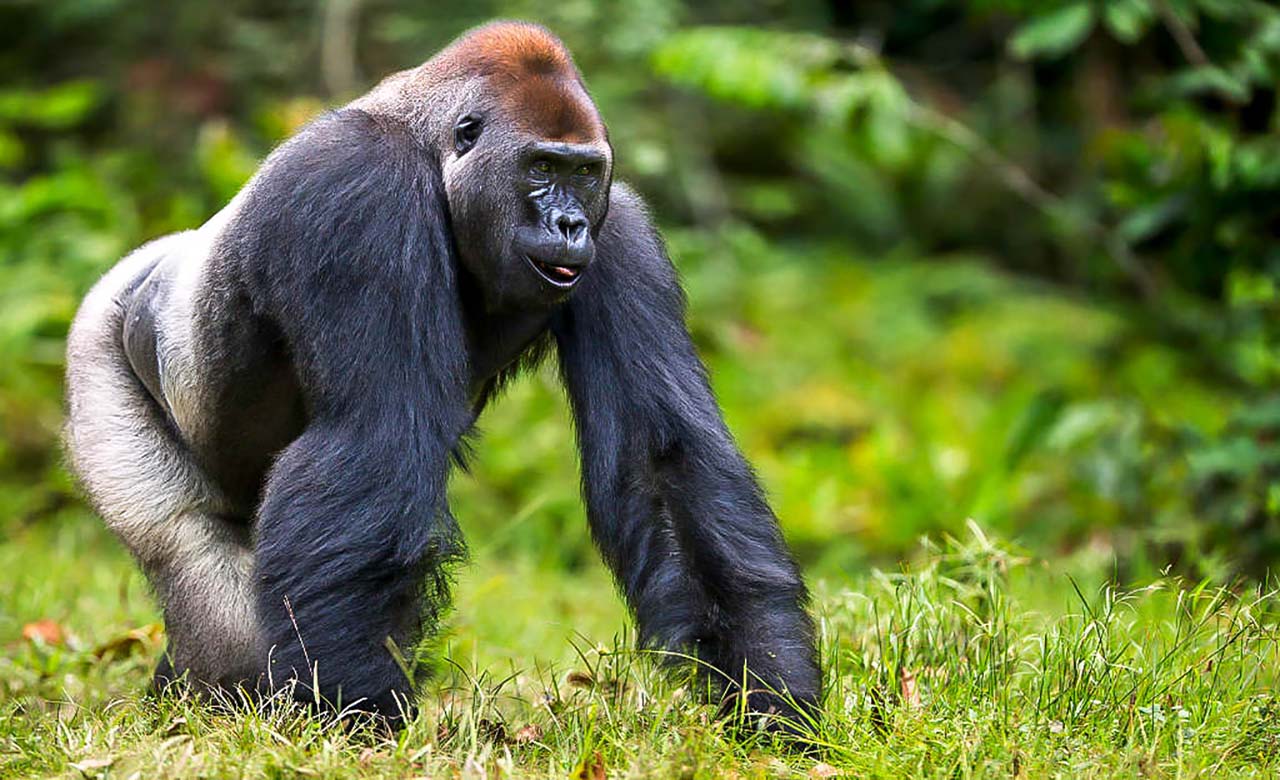
According to the latest estimates, around 2,215 individuals live in the Dzanga-Sangha reserve and three groups are accustomed to humans presence. Visitors will have the opportunity to observe these animals in their natural habitat, accompanied by trained guides and local trackers. Dzanga-Sangha National Park offers you the opportunity to track three groups of habituated lowland gorillas: The famous Makumba group with 3-year old twins and the baby born in February 2019, the group led by Mayele, an amazing silverback who lives in Mongambe and Mata, and the new group just opened to tourism observation in April 2019 after 10 years of habituation. Gorilla tracking begins
at the camp and is done under the direction of well-trained and experienced trackers and guides, the number of authorized visitors per group is a maximum of 3. Gorilla tracking can vary from 15 minutes to 3 hours. The Primate Habituation Program of Dzanga-Sangha is currently the most successful ecotourism and research program on the western lowland gorilla. The habituated gorillas are regularly visited by tourists and are subject to many scientific articles and film documentaries. Those who have had the chance to see gorillas in the wild will never forget this experience and any visit to the park can generate funds that are used to better protect the animals in the park.
